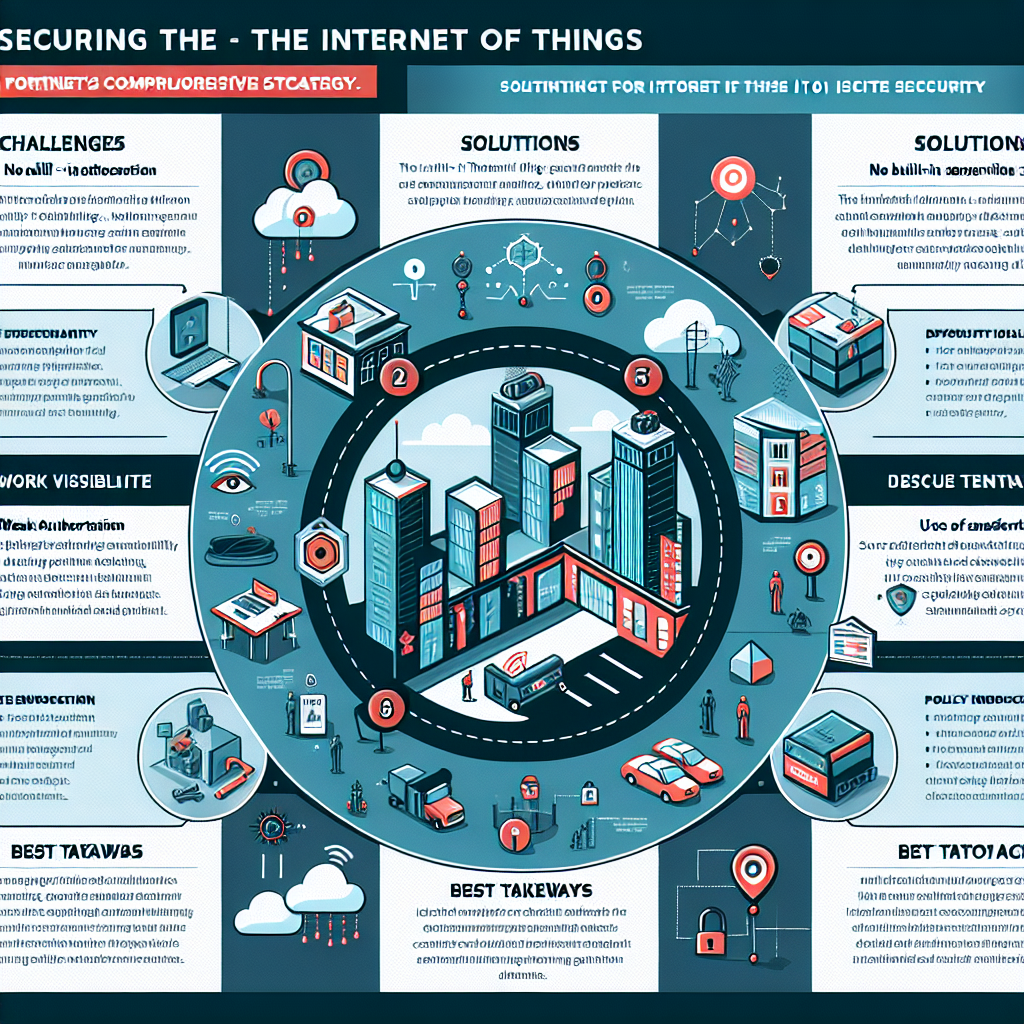
Securing the Internet of Things: Fortinet’s Comprehensive Strategy
The Internet of Things (IoT) is a concept of interconnecting devices and systems to conduct analog information with the supreme goal of enhancing our living and working conditions. However, this pursuit has introduced severe security challenges due to the increased network. As the number of IoT devices continues to increase, it is necessary to take necessary security precautions to protect the devices and the network in which they are connected. This brief will detail Fortinet’s approach to securing IoT, including the challenges to face, solution provided and relevant best practices.
IoT Security Challenges
The most pressing challenge in securing IoT lies in the fact that there are no built-in security systems to monitor and protect the devices from being vandalized by cyber attackers. The devices often use weak authentication and authorization measures, default passwords, and, most importantly, evade detection by standard cybersecurity. Additionally, the devices are characterized by short development cycles, and their low prices make be developers have no motivation to configured secure firmware.
FortiNAC for IoT Device Control
FortiNAC is a solution that encompasses IoT Security. Visibly, the solution provides organizations with network visibility, allowing them to view all existing traffic to specific nodes for potential security threat detection. More importantly, FortiNAC offers to automate the authentication process that entails the immediate isolation of connected devices before submitting them for review to the relevant management.
FortiGate’s Role in IoT Security
As an external firewall, FortiGate would play an essential role in IoT security. It ensures secure connectivity between data storage and interconnected and verified devices. Further, the gate help enforces the internet access policy by ensuring no unwanted software accesses direct connection to user platforms.
Best Practices for IoT Network Segmentation
There are many best practices to effectively secure your organization from threats. IoT network segmentation guarantees an isolated framework that encompasses all connected devices. The network frames are constantly monitored for access and availability.
Conclusion
The IoT network is a significant device in the organization. For better securement of the IoT network, one must ensure to monitor, authenticate and accept device entries cautiously by isolating them. The conclusion brings out the importance that the organization should address to ensure the betterment of their environment.
Key Takeaways
- IoT devices have no built-in security measures with no form of guarding which give rooms for cyber criminals.
- FortiNAC offers network visibility and automates IoT device entry.
- FortiGate enforces internal policy and identifier of unwanted exposures.
- Segmentation helps in doing away with malware infections.
Additional Resources
- Fortinet’s IoT Security Guide
- IoT Security
- Best Practices


